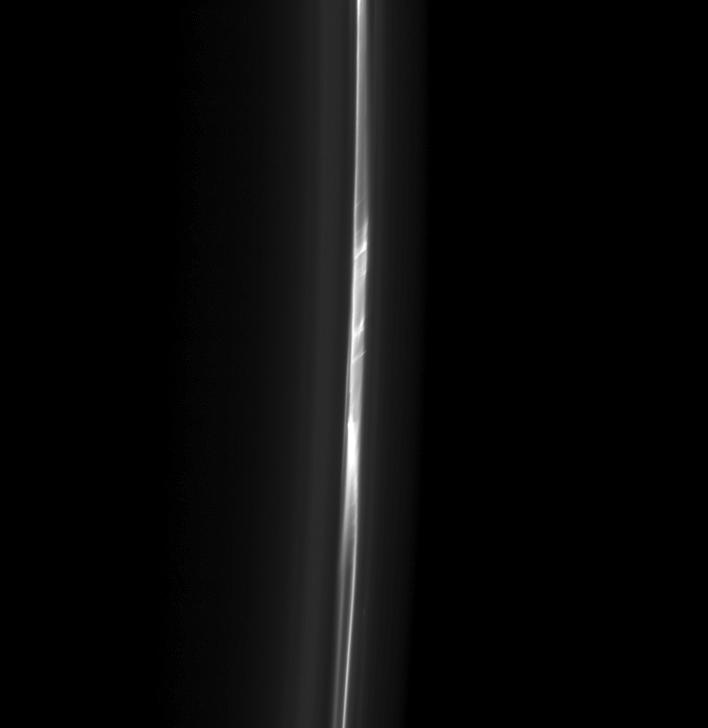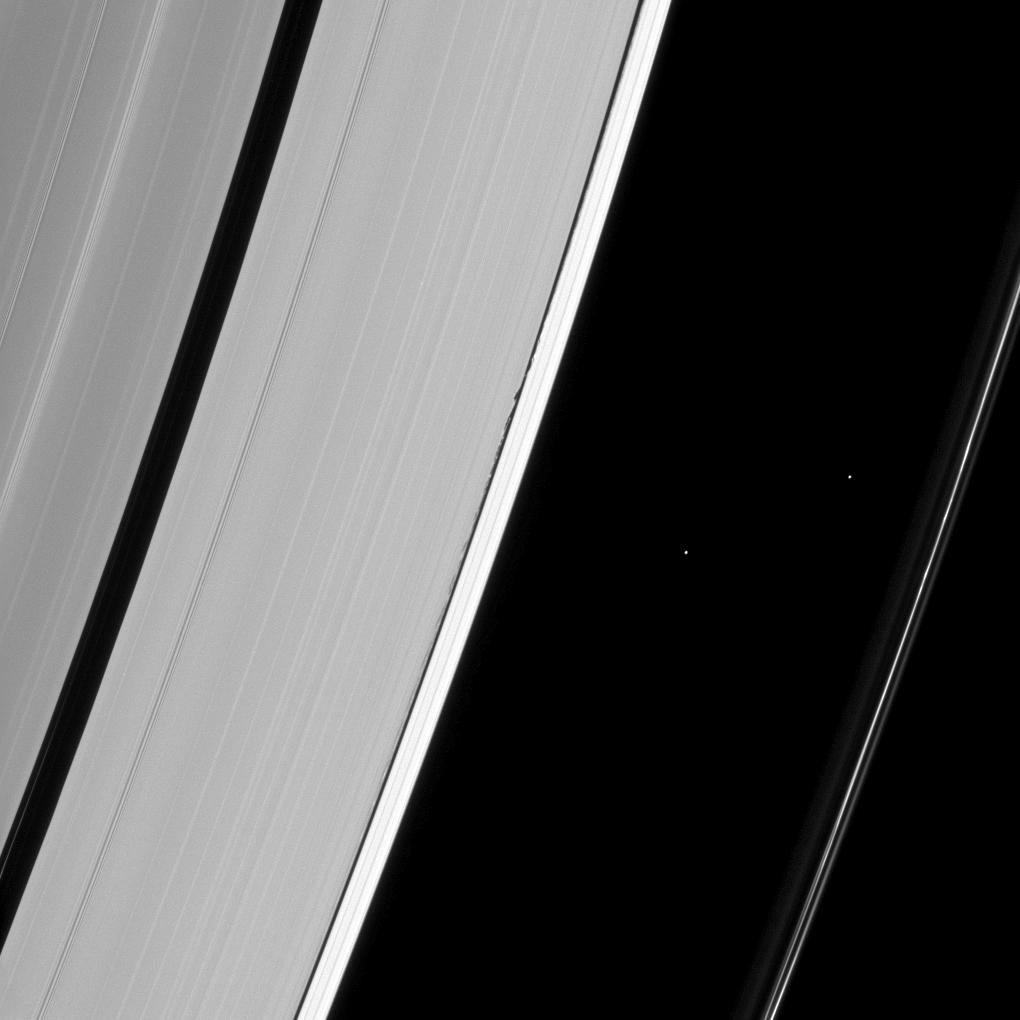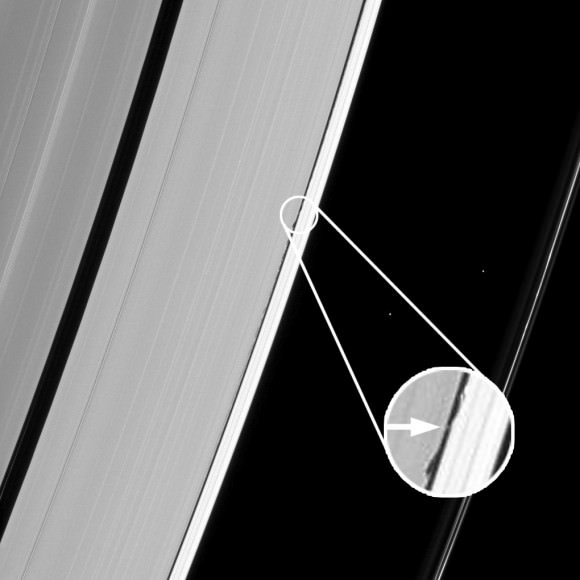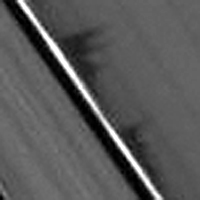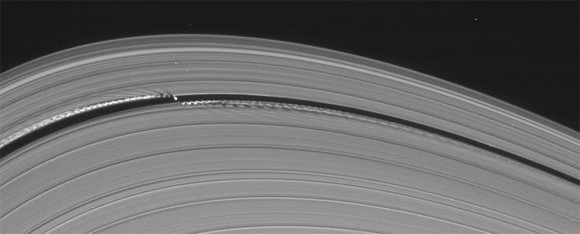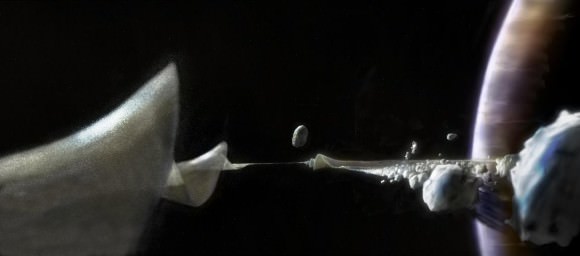Saturn’s F ring is certainly a curious structure. Orbiting the giant planet 82,000 kilometers above its equatorial cloud tops, the F ring is a ropy, twisted belt of bright ice particles anywhere from 30-500 km wide. It can appear as a solid band or a series of braided cords surrounded by a misty haze, and often exhibits clumps and streamers created by the gravitational influence of embedded moonlets or passing shepherd moons.
In the picture above, acquired by the Cassini spacecraft on Feb. 13, 2013 and released on May 27, we see a section of the F ring separated into long ropes and spanned by connecting bands of bright material — the “ladder” structure suggested in the title.
Scientists believe that interactions between the F ring and the moons Prometheus and Pandora cause the dynamic structure of the F ring. (Watch an animation of the F ring and shepherd moons here.)
Made of particles of water ice finer than cigarette smoke, the F ring orbits Saturn beyond the outer edge of the A ring across the expanse of the 2,600-km-wide Roche Division. In these images, Saturn and the main ring systems are off frame to the left.
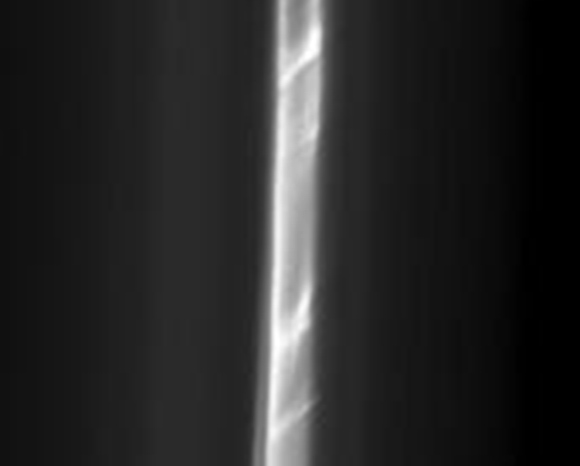
This view looks toward the unilluminated side of the rings from about 32 degrees below the ringplane. The image was taken in visible light with the Cassini spacecraft’s narrow-angle camera (NAC).
The view was obtained at a distance of approximately 426,000 miles (686,000 kilometers) from Saturn and at a phase angle of 162 degrees. Image scale is 2 miles (4 kilometers) per pixel.
Source: NASA/JPL’s Cassini mission site.

